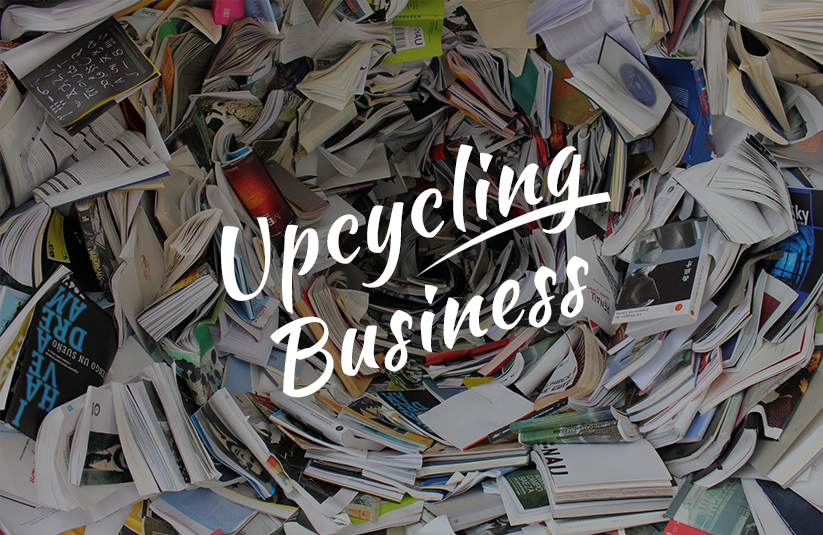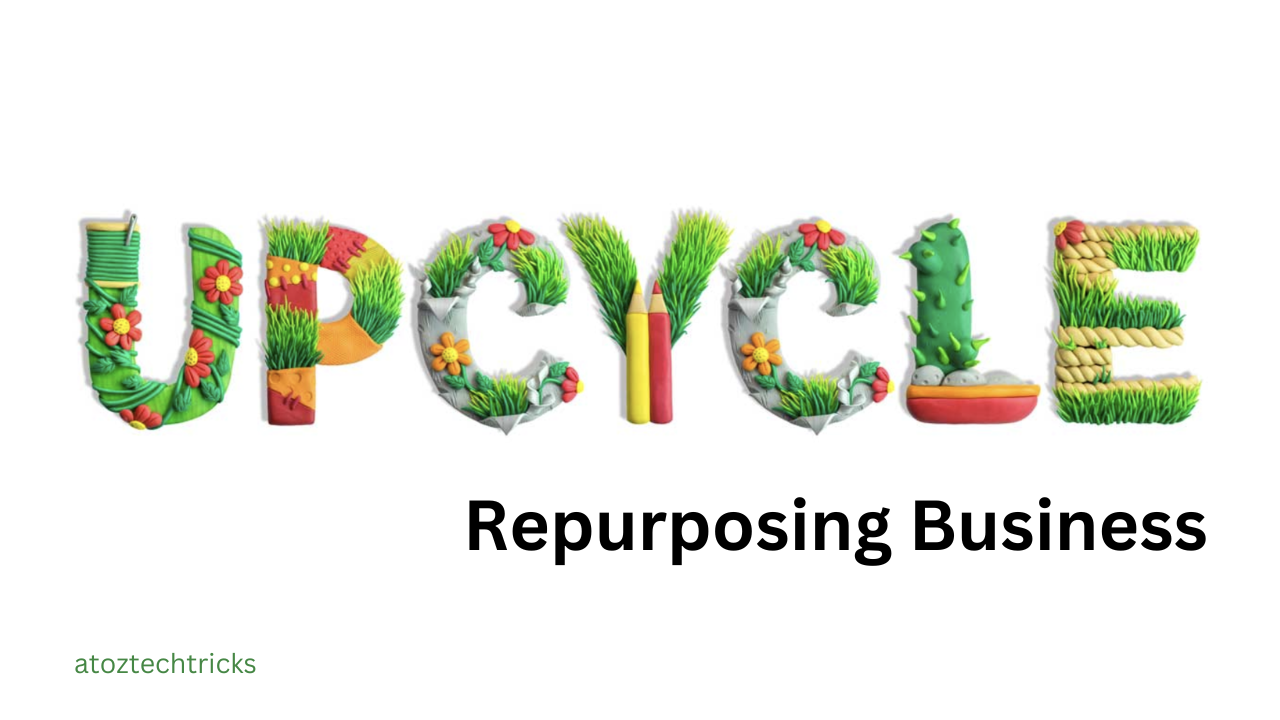Upcycling and Repurposing Business: Transforming Waste into Wealth
In a world increasingly concerned with sustainability and environmental responsibility, the concepts of upcycling and repurposing have gained significant traction. These practices offer innovative ways to reduce waste, minimize environmental impact, and create unique products that resonate with eco-conscious consumers. For businesses, upcycling and repurposing not only represent a commitment to sustainability but also provide an opportunity to tap into a growing market of environmentally aware customers. This article delves into the upcycling and repurposing business, exploring its origins, benefits, challenges, and the various ways entrepreneurs can capitalize on this trend.
Understanding Upcycling and Repurposing
Before diving into the business aspects, it’s important to clarify what upcycling and repurposing mean and how they differ from each other and traditional recycling.
- Upcycling: Upcycling refers to the process of taking waste materials or unwanted products and transforming them into new items of higher quality or value. Unlike recycling, which often breaks down materials to their basic components for reuse, upcycling retains the original material’s structure and enhances it. For example, turning old jeans into a stylish handbag or converting wooden pallets into furniture are forms of upcycling.
- Repurposing: Repurposing involves taking an item and giving it a new use, different from its original intent, without necessarily altering its form significantly. For instance, using an old ladder as a bookshelf or converting wine bottles into candle holders are examples of repurposing. The focus here is on finding a new function for an existing item, thereby extending its life cycle.
- Recycling: Recycling, on the other hand, involves processing used materials into new products, typically by breaking them down to their basic elements. While recycling is crucial for managing waste, it often requires significant energy and resources, and the resulting products may be of lower quality than the original materials. Upcycling and repurposing, in contrast, aim to add value and reduce the need for additional raw materials.
The Origins and Growth of Upcycling and Repurposing
The concepts of upcycling and repurposing are not new; they have roots in human history, where resourcefulness was essential for survival. In many traditional cultures, items were reused and repurposed out of necessity, long before the advent of mass production and consumer culture. However, the modern upcycling movement began to gain momentum in the late 20th and early 21st centuries, driven by environmental concerns and a growing awareness of the negative impacts of waste and overconsumption.
The term “upcycling” was popularized by German engineer Reiner Pilz in the 1990s. Pilz advocated for a shift away from traditional recycling, which he viewed as “downcycling,” or the degradation of material quality. He argued that upcycling could offer a more sustainable alternative by improving the value of discarded materials. Since then, upcycling has evolved into a global movement, with businesses and individuals embracing it as a way to reduce waste and promote sustainability.
The growth of upcycling and repurposing can be attributed to several factors:
- Environmental Awareness: As awareness of environmental issues like climate change, pollution, and resource depletion has increased, consumers and businesses alike have sought out more sustainable practices. Upcycling and repurposing offer tangible ways to reduce waste and lower the environmental impact of production and consumption.
- Economic Incentives: Upcycling and repurposing can be cost-effective for both businesses and consumers. By using materials that would otherwise be discarded, companies can reduce production costs and create unique products with higher profit margins. For consumers, upcycled and repurposed goods often offer a combination of affordability and originality.
- Creativity and Innovation: The upcycling and repurposing movement encourages creativity and innovation. Designers, artisans, and entrepreneurs can experiment with new ways to transform materials, resulting in unique, one-of-a-kind products that stand out in the marketplace.
- Consumer Demand: The rise of the eco-conscious consumer has driven demand for sustainable products. Consumers are increasingly looking for products that align with their values, including those that reduce waste, minimize environmental impact, and support ethical practices.
Green Energy Solutions: Paving the Way for a Sustainable Future
Benefits of Upcycling and Repurposing Businesses
For businesses, upcycling and repurposing offer numerous benefits that go beyond sustainability. These advantages can help companies build a strong brand identity, connect with customers, and thrive in a competitive market.
- Environmental Impact: By turning waste into valuable products, upcycling and repurposing businesses help reduce the amount of waste that ends up in landfills and decrease the demand for new raw materials. This, in turn, lowers greenhouse gas emissions, reduces pollution, and conserves natural resources.
- Cost Savings: One of the primary benefits of upcycling and repurposing is the potential for cost savings. By using discarded or low-cost materials, businesses can reduce production expenses while still creating high-quality products. These cost savings can be passed on to customers or reinvested in the business.
- Unique Products: Upcycled and repurposed products are often one-of-a-kind, making them highly appealing to consumers who value uniqueness and originality. This uniqueness can set a brand apart from competitors and create a loyal customer base.
- Positive Brand Image: Companies that engage in upcycling and repurposing can build a positive brand image as environmentally responsible and innovative. This can enhance customer loyalty, attract new customers, and increase brand recognition.
- Market Differentiation: In a crowded marketplace, upcycling and repurposing offer a way to differentiate a business from competitors. By focusing on sustainability and creativity, companies can carve out a niche market and attract consumers who prioritize ethical and eco-friendly products.
- Community Engagement: Upcycling and repurposing businesses often engage with local communities by sourcing materials, collaborating with artisans, or supporting local environmental initiatives. This community involvement can strengthen the company’s ties to the community and build goodwill.
- Scalability: While many upcycling and repurposing businesses start small, there is significant potential for growth. As demand for sustainable products increases, businesses can scale their operations, expand their product lines, and enter new markets.

Challenges and Considerations for Upcycling and Repurposing Businesses
While upcycling and repurposing offer many advantages, they also come with challenges that entrepreneurs must navigate to build a successful business. Understanding these challenges is essential for developing a sustainable and profitable operation.
- Sourcing Materials: One of the biggest challenges for upcycling and repurposing businesses is sourcing consistent, high-quality materials. Since the business model relies on discarded or surplus materials, availability can be unpredictable. Businesses need to establish reliable supply chains or partnerships to ensure a steady flow of materials.
- Labour and Skill Requirements: Upcycling and repurposing often require skilled labour, particularly in design, craftsmanship, and manufacturing. Finding workers with the necessary skills can be challenging, and training may be required. Additionally, the labour-intensive nature of these processes can limit scalability.
- Perception of Value: While many consumers appreciate the uniqueness of upcycled and repurposed products, others may perceive them as less valuable or of lower quality than new products. Businesses need to invest in marketing and education to communicate the value of their products and change consumer perceptions.
- Regulatory and Legal Issues: Depending on the materials used and the nature of the products, upcycling and repurposing businesses may face regulatory and legal challenges. This could include compliance with health and safety standards, product labelling requirements, and intellectual property concerns. Businesses need to be aware of these regulations and ensure they are operating within the law.
- Pricing Strategy: Setting the right price for upcycled and repurposed products can be tricky. While these products often command higher prices due to their uniqueness and sustainability, businesses must balance pricing with consumer demand and cost considerations. A clear understanding of the target market and competitors is essential for developing an effective pricing strategy.
- Scalability and Growth: Scaling an upcycling and repurposing business can be challenging due to the labour-intensive nature of the work and the variability of materials. Businesses must carefully plan their growth strategies, considering factors such as automation, partnerships, and expansion into new markets.
- Environmental Impact of Operations: While upcycling and repurposing are generally seen as environmentally friendly, businesses must still consider the environmental impact of their operations. This includes energy use, transportation emissions, and waste generated during the production process. Businesses should strive to minimize their overall environmental footprint.
Sustainable Fashion and Accessories: A Guide to Conscious Consumerism
Strategies for Success in Upcycling and Repurposing Business
To succeed in the upcycling and repurposing business, entrepreneurs need to adopt strategies that address the unique challenges of this industry while maximizing its benefits. The following strategies can help businesses thrive in this growing sector:
- Build Strong Relationships with Suppliers: Developing strong relationships with suppliers is key to securing a consistent supply of materials. Businesses should seek out suppliers who share their commitment to sustainability and establish long-term partnerships. This could include collaborating with local businesses, waste management companies, or non-profit organizations.
- Focus on Quality and Craftsmanship: High-quality craftsmanship is essential for creating upcycled and repurposed products that are durable, functional, and aesthetically pleasing. Investing in skilled labour and ensuring meticulous attention to detail can set a business apart from competitors and build a reputation for excellence.
- Educate Consumers: Consumer education is critical for overcoming perceptions that upcycled and repurposed products are of lower quality. Businesses should use marketing, storytelling, and transparency to communicate the value of their products and the environmental benefits of upcycling. Sharing the story behind each product, including where the materials came from and how they were transformed, can create a deeper connection with customers.
- Leverage Digital Marketing: Digital marketing is a powerful tool for reaching eco-conscious consumers and promoting upcycled and repurposed products. Businesses should invest in a strong online presence, including social media, e-commerce platforms, and content marketing. Highlighting the sustainability aspects of the products, showcasing unique designs, and engaging with customers online can drive sales and build brand loyalty.
- Diversify Product Offerings: Diversifying product offerings can help businesses reach a broader audience and reduce reliance on a single revenue stream. This could involve expanding into different product categories, offering custom or made-to-order items, or collaborating with other brands to create unique collections. By offering a range of products, businesses can cater to different tastes, budgets, and needs.
- Implement Sustainable Practices: To align with the principles of upcycling and repurposing, businesses should implement sustainable practices across their operations. This includes minimizing waste, using renewable energy, reducing water consumption, and sourcing eco-friendly materials. By demonstrating a commitment to sustainability, businesses can build trust with customers and strengthen their brand.
- Engage with the Community: Engaging with the local community can provide valuable support and resources for upcycling and repurposing businesses. This could involve participating in local markets, collaborating with artisans or non-profits, or hosting workshops and events. Community engagement can also help businesses build a loyal customer base and generate positive word-of-mouth.
- Stay Innovative: Innovation is at the heart of upcycling and repurposing. Businesses should continually explore new ideas, materials, and designs to stay ahead of the competition and keep their product offerings fresh. This could involve experimenting with new techniques, collaborating with artists or designers, or exploring emerging trends in sustainability.

Successful Upcycling and Repurposing Business Examples
Several businesses have successfully embraced upcycling and repurposing, demonstrating the potential of this industry. These companies offer valuable insights and inspiration for entrepreneurs looking to enter the market.
- Terracycle: Terracycle is a global leader in upcycling and recycling, turning hard-to-recycle waste materials into new products. The company partners with major brands to collect waste, such as chip bags, toothbrushes, and coffee pods, and transform them into items like backpacks, benches, and playgrounds. Terracycle’s innovative approach has made it a pioneer in the upcycling industry.
- Reformation: Reformation is a sustainable fashion brand that focuses on upcycling and repurposing vintage clothing and deadstock fabric. The brand’s commitment to sustainability and transparency has resonated with consumers, making it a popular choice for eco-conscious fashionistas. Reformation’s success demonstrates the potential for upcycling in the fashion industry.
- Freitag: Freitag is a Swiss company that upcycles used truck tarps, seat belts, and bicycle inner tubes into durable and stylish bags and accessories. Each product is unique, reflecting the wear and tear of the materials’ previous lives. Freitag’s commitment to sustainability and quality has earned it a loyal following and international recognition.
- Worn Wear by Patagonia: Patagonia’s Worn Wear program encourages customers to trade in their used Patagonia gear for store credit. The company then repairs, upcycles, or resells the items, extending their life cycle and reducing waste. Worn Wear is an example of how established brands can incorporate upcycling into their business models.
- Upcycled Food Association: The Upcycled Food Association (UFA) is a non-profit organization that supports businesses in the upcycled food industry. UFA works to reduce food waste by promoting the use of surplus or byproduct ingredients in new food products. The association’s work highlights the potential for upcycling in the food and beverage industry.
The upcycling and repurposing business represents a powerful intersection of sustainability, creativity, and entrepreneurship. As consumers increasingly prioritize eco-friendly and ethical products, businesses that embrace upcycling and repurposing are well-positioned to succeed in the marketplace. By turning waste into valuable products, these businesses not only contribute to environmental conservation but also create unique, high-quality items that resonate with modern consumers.
While challenges such as material sourcing, labor requirements, and consumer perceptions exist, they can be overcome with the right strategies, including strong supplier relationships, a focus on quality, consumer education, and sustainable practices. As the demand for sustainable products continues to grow, the future of upcycling and repurposing businesses looks bright, offering endless opportunities for innovation and growth.
Entrepreneurs looking to enter this space should draw inspiration from successful examples and stay committed to the principles of sustainability and creativity. By doing so, they can build thriving businesses that make a positive impact on the environment and society while meeting the evolving needs of today’s consumers.




Post Comment